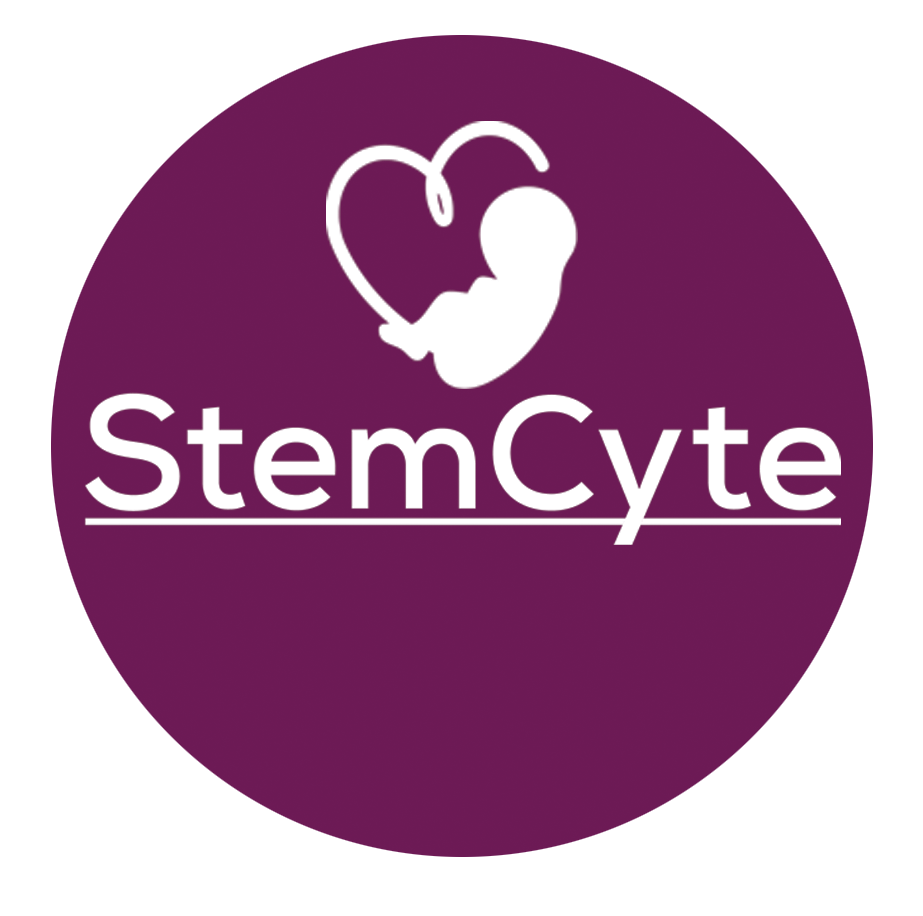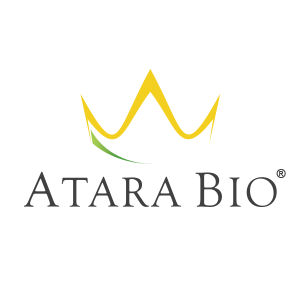预约演示
更新于:2025-05-07
Hematopoietic stem cell transplantation
造血干细胞移植
更新于:2025-05-07
基本信息
别名 HCT、HEMATOPOIETIC STEM CELL TRANSPL、HSCT + [29] |
简介 Transfer of HEMATOPOIETIC STEM CELLS from BONE MARROW or BLOOD between individuals within the same species (TRANSPLANTATION, HOMOLOGOUS) or transfer within the same individual (TRANSPLANTATION, AUTOLOGOUS). Hematopoietic stem cell transplantation has been used as an alternative to BONE MARROW TRANSPLANTATION in the treatment of a variety of neoplasms. |
关联
115
项与 造血干细胞移植 相关的药物靶点- |
作用机制 细胞替代物 |
在研机构 |
原研机构 |
非在研适应症- |
最高研发阶段批准上市 |
首次获批国家/地区 美国 |
首次获批日期2024-11-20 |
作用机制 CD3刺激剂 [+3] |
非在研适应症- |
最高研发阶段批准上市 |
首次获批国家/地区 美国 |
首次获批日期2023-08-09 |
720
项与 造血干细胞移植 相关的临床试验NCT06679530
Music During Allogeneic Stem Cell Transplant Hospitalization: a Pilot Trial
The goal of this trial is to develop an Independent Music Listening tool for stem cell transplant patients that have prolonged hospitalizations. The main questions it aims to answer are:
[primary hypothesis or outcome measure 1]? [primary hypothesis or outcome measure 2]?
Participants will use a self-guided music listening intervention of 1-hour daily music listening during their inpatient hsopitalization and delivered via web-based platform.
[primary hypothesis or outcome measure 1]? [primary hypothesis or outcome measure 2]?
Participants will use a self-guided music listening intervention of 1-hour daily music listening during their inpatient hsopitalization and delivered via web-based platform.
开始日期2025-12-01 |
NCT06461988
An Open-Label, Non-Randomized, Phase II Study to Study the Efficacy of Talquetamab (JNJ-64407564) and Lenalidomide as Post Stem Cell Transplant Maintenance in Multiple Myeloma (OPTIMMAL)
Multiple myeloma (MM) is a heterogenous plasma cell malignancy characterized by clonal proliferation of plasma cells and organ damage. Autologous transplantation with high dose chemotherapy is the standard of care in frontline treatment of eligible patients with MM.
开始日期2025-11-01 |
申办/合作机构  Stanford University Stanford University [+1] |
NCT06926595
Allogeneic Hematopoietic Stem Cell Transplantation (HSCT) With Low-Dose Post-Transplant Cyclophosphamide for Prophylaxis of Graft-versus-Host Disease in Hematological Malignancies
This Phase 2, single-arm, open-label study aims to evaluate the safety and efficacy of low-dose (25 mg/kg) post-transplant cyclophosphamide (PTCy) for prophylaxis of Graft-versus-Host Disease (GVHD) in patients undergoing allogeneic stem cell transplantation following reduced-intensity or non-myeloablative conditioning. The study will focus on matched sibling, matched unrelated, and haploidentical peripheral blood stem cell donors. The primary endpoint is 1-year GVHD-Free Relapse-Free Survival (GRFS). The study seeks to determine if low-dose PTCy offers similar outcomes as higher doses, with potentially reduced toxicity.
开始日期2025-08-01 |
申办/合作机构 |
100 项与 造血干细胞移植 相关的临床结果
登录后查看更多信息
100 项与 造血干细胞移植 相关的转化医学
登录后查看更多信息
0 项与 造血干细胞移植 相关的专利(医药)
登录后查看更多信息
649
项与 造血干细胞移植 相关的文献(医药)2025-06-01·Computers in Biology and Medicine
Establishment of a machine learning-based prediction framework to assess trade-offs in decisions that affect post-HCT outcomes
Article
作者: Maiers, Martin ; Bupp, Caitrin ; Akdemir, Deniz ; Auletta, Jeffery J ; Bolon, Yung-Tsi
2025-03-01·Transplantation and Cellular Therapy
Integrating Social Work Throughout the Hematopoietic Cell Transplantation Trajectory to Improve Patient and Caregiver Outcomes
Review
作者: Zoll, Kate ; Gordon, Ana ; Curran, Darah W ; Walker, Kristina ; Randall, Jill ; Tweeten, Ben ; Hassel, Hailey ; Russell, Jessie ; Boyle, Clair
2025-02-01·Clinica Chimica Acta
Validation and performance of MicroVue sC5b-9 Plus ELISA on the Dynex DS2 platform
Article
作者: Dickerson, Jane A ; Wilson, Rebecca J ; Bhandari, Marcy ; Johnson, Lisa M
236
项与 造血干细胞移植 相关的新闻(医药)2025-04-23
·药事纵横
前言2025年4月22日,阿斯利康宣布长效补体C5抑制剂瑞利珠单抗(ravulizumab)正式在华获批,用于治疗抗AChR抗体阳性的重症肌无力(gMG)。作为全球首个每8周一次给药的长效补体抑制剂,其凭借“一针管两月”的便捷性,直击传统疗法频繁注射的痛点,临床数据显示疾病加重风险降低71.1%,疗效持续长达164周。在补体抑制剂赛道,阿斯利康如何凭借差异化优势抢占市场?瑞利珠单抗靶向C5的独特机制瑞利珠单抗作为一种人源化单克隆抗体,在重症肌无力的治疗中,犹如一位精准的“狙击手”,其独特的靶向机制为患者带来了希望的曙光。它能够凭借高度的特异性,与补体蛋白C5实现高亲和力结合,使其无法正常发挥作用,从而有效抑制C5裂解为促炎因子C5a和溶细胞因子C5b。C5a作为一种强力的促炎介质,会吸引大量炎症细胞如中性粒细胞、巨噬细胞等聚集到神经肌肉接头处,引发强烈的炎症反应,进一步破坏神经肌肉接头的结构和功能,加剧患者的症状。而瑞利珠单抗通过阻断C5a的产生,成功地扑灭了这把“炎症之火”,阻止了炎症细胞的过度浸润,减少了炎症对神经肌肉接头的损伤。C5b则是末端补体复合物C5b-9(也就是膜攻击复合物MAC)的起始亚基,MAC一旦形成,就如同在细胞表面安装了一颗“炸弹”,会在细胞膜上打孔,导致细胞溶解和死亡。瑞利珠单抗抑制C5b的产生,就相当于拆除了这颗“炸弹”,从源头上阻止了MAC的组装,避免了其对神经肌肉接头突触后膜的直接破坏,有效地保护了神经肌肉接头的完整性,维持了神经肌肉的正常传递功能,从而缓解重症肌无力患者的症状。瑞利珠单抗之所以能够实现每8周一次给药,为患者带来极大的便利,得益于其精妙绝伦的长效设计,这一设计使其在众多治疗药物中脱颖而出,犹如一颗璀璨的明星。通过对抗体结构的精心优化和改造,瑞利珠单抗成功地延长了自身的半衰期,达到了普通C5抑制剂的3倍以上。这一卓越的成就,主要源于其在Fc段(可结晶片段)的独特设计。Fc段就像是抗体的“续航引擎”,在药物的体内代谢过程中起着关键作用。瑞利珠单抗通过对Fc段进行修饰,改变了其与体内某些蛋白(如FcRn,新生儿Fc受体)的相互作用方式和亲和力。FcRn在抗体的代谢过程中扮演着“回收再利用”的重要角色,它能够与抗体结合,保护抗体不被快速降解,从而延长抗体在体内的循环时间。瑞利珠单抗通过优化与FcRn的结合特性,使其在体内的循环时间大幅延长。当瑞利珠单抗进入人体后,FcRn能够高效地与它结合,将其从即将被降解的命运中“拯救”出来,然后再释放回血液循环中,继续发挥作用。这种与FcRn的高效结合和循环利用机制,使得瑞利珠单抗在体内能够长时间保持稳定的有效浓度,如同拥有了“超长续航能力”。因此,患者在初始剂量给药后,后续只需每8周静脉注射一次,就能够持续获得药物的治疗效果。这种长效设计不仅大大减少了患者的给药次数,降低了患者频繁前往医院接受治疗的负担,还提高了患者对治疗的依从性,让患者能够更加轻松地接受治疗,为长期治疗带来了极大的便利,显著改善了患者的生活质量。临床验证:疗效持续4年,疾病加重风险直降71%CHAMPION - MG 3 期研究是一项随机、双盲、安慰剂对照多中心试验,从 2019 年 3 月至 2020 年 11 月在全球 13 个国家 85 个中心展开。入组患者需是 18 岁及以上、体重 40kg 及以上、抗 AChR 抗体阳性的 MG 患者,满足多项严格条件,包括确诊时间、临床分级、MG - ADL 量表评分等,且 3 年内接种过脑膜炎球菌感染疫苗。研究采用 1:1 随机分配,将患者分为瑞利珠单抗治疗组和安慰剂组。治疗方案为患者在基线(第 1 天)按体重接受不同初始负荷剂量瑞利珠单抗或安慰剂,第 15 天(第 2 周)按体重接受不同维持剂量瑞利珠单抗或安慰剂,之后每 8 周给药一次。试验期间允许患者使用稳定剂量免疫抑制疗法或胆碱酯酶抑制剂 ,其设计严谨规范,为瑞利珠单抗疗效验证提供依据,结果具有普适性和可靠性,对临床实践有指导意义。瑞利珠单抗疗效不仅体现在短期,长期随访优势也显著。通过开放标签扩展期研究的长期随访发现,临床获益持续至 164 周(约 4 年)。期间,瑞利珠单抗治疗组患者治疗效果良好,疾病得到有效控制。与安慰剂组相比,该治疗组疾病加重发生率降低 71.1% 。这表明瑞利珠单抗能长期稳定控制疾病,降低恶化风险,减少患者痛苦,助患者回归正常生活。竞品围剿:Soliris、依库珠单抗之后,谁主沉浮?(一)依库珠单抗(Soliris)的优劣势依库珠单抗作为全球首个获批的C5补体抑制剂,于2007年成功上市,在补体药物领域可谓是“开山鼻祖”般的存在,开启了补体靶向治疗的新时代。它的出现,为阵发性睡眠性血红蛋白尿(PNH)等疾病的治疗带来了革命性的变化,成为了当时PNH患者唯一有效的治疗药物。其作用机制与瑞利珠单抗类似,同样是通过与补体蛋白C5特异性结合,高亲和力地阻断C5被酶C5转化酶裂解成C5a和C5b,从而抑制后续的级联杀伤反应,有效阻止了补体介导的血管内溶血,为患者的治疗带来了希望。在市场先发优势方面,依库珠单抗凭借其率先上市的优势,在全球范围内积累了大量的临床使用经验和患者数据。这些宝贵的经验和数据,不仅为医生的临床决策提供了有力的参考,也使得患者和医疗专业人员对其疗效和安全性有了更深入的了解和信任,在市场上建立了较高的品牌知名度和忠诚度,占据了一定的市场份额。然而,依库珠单抗也存在明显的劣势,其中最突出的就是其给药频率较高,需要每2周静脉注射一次。频繁的注射不仅给患者带来了身体上的痛苦和不便,还增加了患者往返医院的时间和经济成本,对患者的日常生活产生了较大的影响。此外,长期频繁的静脉注射还可能引发一系列与注射相关的不良反应,如感染、血栓形成等,增加了患者的治疗风险。相比之下,瑞利珠单抗每8周一次的给药方式,极大地减少了患者的给药次数,降低了患者的治疗负担和风险,提高了患者的生活质量和治疗依从性,在便捷性方面具有显著的优势。(二)诺华iptacopan的挑战诺华的iptacopan是一款极具创新性的口服特异性替代补体途径因子B抑制剂,它的出现为补体相关疾病的治疗带来了新的思路和选择。其作用机制与瑞利珠单抗有所不同,它主要通过高效抑制补体替代通路中因子B,在C5末段途经的上游发挥作用,不仅可以预防PNH的血管内溶血,还可以有效预防血管外溶血。这种独特的作用机制,使得iptacopan在治疗PNH等疾病时,展现出了独特的优势。在疗效方面,iptacopan表现出色。在多项临床试验中,均展现出了令人瞩目的治疗效果。在针对PNH患者的研究中,无论是先前没有接受过C5抑制剂的患者,还是接受标准护理疗法(C5抑制剂Soliris[eculizumab])治疗但仍有活动性溶血的患者,iptacopan单药治疗或作为附加疗法,都能显著减少血管内和血管外溶血。大多数患者实现了快速和持久的无输血改善,有效提高了患者的血红蛋白水平,改善了患者的贫血症状,降低了患者对输血的依赖,为患者的生活质量带来了显著的提升。给药方式上,iptacopan作为口服药物,具有独特的便利性。与瑞利珠单抗的静脉注射方式相比,口服给药避免了静脉穿刺带来的痛苦和风险,患者可以在家中自行服药,无需频繁前往医院,大大提高了患者的治疗依从性和生活便利性。这种便捷的给药方式,使得iptacopan在市场上具有很强的竞争力,对瑞利珠单抗在PNH等适应症市场构成了较大的竞争威胁。(三)国内药企布局与竞争态势在国内,天境生物、康诺亚等药企也敏锐地捕捉到了补体靶点的巨大潜力,积极投身于补体相关药物的研发布局。天境生物在生物药研发领域不断探索创新,凭借其先进的技术平台和专业的研发团队,在补体靶点研发方面取得了一定的进展。康诺亚则同时布局自身免疫性疾病以及肿瘤疾病双重赛道,在补体相关疾病药物研发上也展现出了坚定的决心和强大的实力。然而,目前这些国内药企的补体靶点研发项目大多处于早期临床阶段。天境生物的相关产品可能还在进行临床试验的初步探索,以验证药物的安全性和初步疗效;康诺亚自主研发的国内首款靶向MASP-2创新性单抗CM338虽然已经获得CDE批准开展临床试验,但仍处于I期健康人试验阶段,距离上市还有很长的路要走。与已经获批上市并广泛应用的瑞利珠单抗相比,它们在研发进度上存在明显的差距。瑞利珠单抗已经在多个国家和地区获批用于多种适应症的治疗,积累了丰富的临床经验和大量的患者数据,而国内药企的产品还需要经过漫长的临床试验和审批过程,才能进入市场,在短期内难以对瑞利珠单抗构成实质性的竞争威胁。拓展版图:管线布局(一)IgA肾病的潜力探索瑞利珠单抗在IgA肾病治疗领域展现出巨大的探索潜力,其相关的3期临床研究备受瞩目。IgA肾病作为全球范围内最常见的原发性肾小球疾病,在中国的发病率尤为突出,占原发性肾小球肾炎病例的30%-40%,患者群体庞大,现有患者约500万,且每年新增确诊超10万人。这一疾病高发于20-40岁的青壮年群体,对患者的生活和健康产生了严重影响。目前,IgA肾病的传统治疗手段存在诸多局限性。临床上常用的血管紧张素转换酶抑制剂(ACEI)、血管紧张素Ⅱ受体拮抗剂(ARB)、糖皮质激素、免疫抑制剂等药物,虽能在一定程度上控制血压、减少蛋白尿、延缓肾功能进展,但对于病情较重或对传统治疗反应不佳的患者,疗效往往不尽如人意。长期使用糖皮质激素还可能引发骨质疏松、血糖升高、感染风险增加等一系列副作用,给患者带来额外的痛苦。瑞利珠单抗为IgA肾病的治疗带来了新的希望。其作用机制基于补体系统在IgA肾病发病过程中的关键作用。越来越多的证据表明,补体的异常激活在IgA肾病中具有致病性,与疾病的严重程度及预后密切相关。瑞利珠单抗作为长效补体C5蛋白抑制剂,通过与C5紧密结合,抑制其裂解为C5a和C5b,从而有效防止末端补体复合物C5b-9的产生,从源头上阻断了补体介导的免疫损伤,有望为IgA肾病患者提供更有效的治疗方案。在一项II期临床试验(NCT04564339)中,瑞利珠单抗展现出了令人鼓舞的治疗效果。与安慰剂相比,瑞利珠单抗组受试者在第26周时尿蛋白快速且显著地降低,24小时尿蛋白与肌酐比值(UPCR)变化达到-40.3%,而安慰剂组为+10.9%,且瑞利珠单抗组耐受性良好,未出现严重的不良反应。基于这一积极的II期试验结果,瑞利珠单抗针对IgA肾病的III期临床试验(ICAN)正在紧锣密鼓地进行中。一旦III期临床试验取得成功,瑞利珠单抗将为IgA肾病患者带来全新的治疗选择,有望打破目前治疗手段的局限,改善患者的预后,减轻患者的痛苦,具有巨大的市场前景和社会价值。(二)血栓性微血管病(TMA)及其他适应症研究除了IgA肾病,瑞利珠单抗在成人和青少年造血干细胞移植(HSCT)后出现的血栓性微血管病(TMA)治疗等方面也开展了深入的临床研究,展现出了多元化的适应症拓展方向。血栓性微血管病(TMA)是造血干细胞移植(HSCT)后一种严重且危及生命的并发症,其发病机制涉及血管内皮细胞损伤和补体系统异常活化。在HSCT过程中,预处理、免疫抑制剂的使用以及移植早期的并发症等因素,都可能对血管内皮细胞造成破坏,引发补体系统的异常激活,导致微血管病性溶血性贫血、血小板减少和微血管血栓形成,进而导致以肾脏为代表的多器官受累,严重威胁患者的生命健康。据国际血液和骨髓移植研究中心登记的数据显示,在23665例异基因HSCT患者中,TA-TMA的3年累积发病率为3%;在一项纳入758例中位年龄34岁患者的研究中,TA-TMA的发病率为15.5%。瑞利珠单抗凭借其对补体系统的精准调控作用,有望成为治疗TMA的有效药物。通过抑制补体蛋白C5的裂解,瑞利珠单抗能够减少炎症介质的产生,减轻血管内皮细胞的损伤,从而缓解TMA的症状,降低患者的死亡风险。目前,相关的临床研究正在积极推进,旨在进一步验证瑞利珠单抗在TMA治疗中的安全性和有效性,为HSCT后TMA患者提供新的治疗策略,改善这一高危患者群体的预后。最后瑞利珠单抗的获批,不仅为重症肌无力患者提供了“减负”新方案,更标志着中国补体抑制剂赛道迈入长效化时代。面对诺华口服药的挑战与国产药企的追赶,阿斯利康需加速适应症扩展与本土化布局,巩固先发优势。未来,补体药物在肾病、血液病、神经免疫等领域的应用将重塑千亿市场格局。而对中国患者而言,更多创新疗法的落地,意味着从“生存”到“生活”的真正转变——这或许才是医药创新的终极意义。参考:NMPA官网,阿斯利康官网药事纵横投稿须知:稿费已上调,欢迎投稿
2025-04-17
·药融圈
▲8月1-2日 2025生物医药创新博览会 扫码报名注:本文不构成任何投资意见和建议,以官方/公司公告为准;本文仅作医疗健康相关药物介绍,非治疗方案推荐(若涉及),不代表平台立场。任何文章转载需得到授权。老牌核酸药物公司“断臂求生”新药非坦途,英国老牌核酸药物公司SilenceTherapeutics最近发生重大战略调整。2025年2月底,Silence宣布暂不启动公司内部核心项目Zerlasiran(SLN360)的3期临床研究,直到为这一项目找到新的合作伙伴。Zerlasiran此前是Silence进展最快的项目,这是一种针对脂蛋白(a)[Lp(a)]的siRNA疗法,设计为皮下注射制剂,通过靶向降解LPA基因转录的mRNA以减少Lp(a)的产生,从而达到治疗与高水平Lp(a)相关的心血管疾病的目的。2024年11月18日,Silence在美国心脏协会(AHA)年会上公布了Zerlasiran最新的2期临床数据:从基线至第36周,Zerlasiran治疗组(每16周300毫克、每24周300毫克或每24周450毫克)经安慰剂校正后使患者Lp(a)浓度在对应时间段内平均降幅达到了80%以上。不过资本市场对这一结果似乎并不买账,数据披露当日Silence股价跌去13.23%,次日又暴跌36.75%。目前市场上还没有专门针对Lp(a)的降脂疗法获批,但是Zerlasiran已经有几款核酸药物竞争对手处于临床后期阶段,例如安进的siRNA疗法Olpasiran、诺华/Ionis的ASO疗法Pelacarsen、礼来/Dicerna(被诺和诺德收购)的siRNA疗法Lepodisiran。摩熵医药数据pharma.bcpmdata.com(原药融云数据)显示:国内布局本靶点的小核酸药企有:恒瑞医药、赫吉亚、炫景、靖因、等等。除此之外,还有小分子企业布局。此次Silence战略调整就在该公司终止合作的两个月之后。双方此前的合作始于2021年3月,合作旨在利用Silence专有的mRNAi GOLD™平台共同开发针对三个未披露靶点的siRNA药物。不过该合作在2024年12月终止。虽然Silence在2024年第四季度收到了监管机构对于Zerlasiran的3期临床试验设计的积极反馈,并推进了Zerlasiran的3期临床试验准备工作,但现在Silence或许很难再去推进3期临床研究,毕竟这是非常烧钱的,况且Silence还面临着几家大厂的竞争。最近Silence在为Zerlasiran积极寻找合作方。这一策略调整也让该公司现金流情况得以缓解,预计足以支撑到2027年。此前也遭“退货”,挖走合作方CSOSilence在最近几年也遭遇过其他合作方的“退货”。2019年7月,Silence与Mallinckrodt达成合作,针对在补体介导的疾病中沉默补体级联的靶点,开发并商业化RNAi药物。在该合作中,Silence获得了2000万美元预付款,以及500万美元的股权投资,Mallinckrodt获得了靶向C3的临床前项目SLN501的全球独家许可,以及另外两个临床前未披露靶点补体项目的未来选择权,Mallinckrodt已在2020年7月行使了选择权。不过在2023年3月,Silence重新获得了两个未披露靶点补体项目的全球独家权利。与此同时该公司还从Mallinckrodt挖走了首席科学官Steven Romano博士,担任Silence的首席医学官兼研发主管,最初他在两家公司签署合作协议之时于2019年7月作为非执行董事加入Silence。Romano博士此前曾在辉瑞工作了16年,在礼来工作了4年。一年后的2024年3月,Mallinckrodt通知Silence,在1期临床试验完成后,将不会继续进一步开发靶向C3的项目SLN501。双方合作就此终止。Steven Romano博士现在是Silence的执行副总裁兼首席研发官。阿斯利康合作根据最新年报披露,Silence目前公开的主要合作伙伴貌似只有阿斯利康。2020年3月,Silence与阿斯利康达成了一项合作协议,以发现、开发和商业化用于治疗心血管、肾脏、代谢和呼吸系统疾病的siRNA疗法。两家公司将合作实现siRNA分子向肝脏、心脏、肺和其他组织的递送。该合作最初涵盖五个靶点,阿斯利康可以选择将合作扩展到另外五个靶点。根据该协议,阿斯利康向Silence支付了6000万美元预付款并向Silence进行2000万美元的股权投资。对于每个靶点,Silence有资格获得高达4亿美元的里程碑,以及分层版税。2023年和2024年,Silence分别从此次合作中获得了1000万美元的选择权费用和1000万美元的里程碑付款。Silence Therapeutics与阿斯利康最早的公开合作记录可以追溯到2007年,当时双方在呼吸系统疾病领域建立了合作关系,2010年,双方的合作被扩展到了包括肿瘤学在内的多个领域。重点转向罕见病暂停心血管项目Zerlasiran之后,Silence将优先投资于罕见病项目Divesiran(SLN124),这是一种靶向TMPRSS6的siRNA疗法,被设计为皮下注射,用于治疗真性红细胞增多症(PV),有潜力成为PV领域first-in-class的siRNA疗法。PV是一种罕见的骨髓增生性肿瘤,其特征是血细胞和血小板过多,常导致HCT(红细胞压积)升高。HCT升高超过45%与心血管或血栓事件的死亡率升高4倍相关。该病影响美国约15万人,全球约350万人。目前的标准治疗方案包括重复进行放血疗法以降低HCT和/或使用细胞减少剂来减少红细胞的产生。目前还没有专门针对红细胞和HCT的获批疗法。TMPRSS6基因是铁调素的负调控因子,铁调素是控制体内铁稳态的主要激素。通过在PV患者中沉默TMPRSS6基因,Divesiran旨在增加肝细胞中铁调素的产生和释放,从而限制铁进入骨髓,进而减少红细胞的过度产生。2024年12月,Silence在美国血液学会(ASH)年会上公布了Divesiran治疗PV患者的1/2期临床试验的1期阳性中期结果。中期结果显示,在一系列PV患者中,低频率的Divesiran治疗显著减少了静脉放血术的需求,同时降低了HCT水平。此外,迄今为止,该药物耐受性良好,没有剂量限制毒性。与此同时,Silence还宣布Divesiran的2期临床试验部分已完成首例患者给药,预计将在2025年年底完成患者招募。摩熵医药数据显示,FDA已授予Divesiran治疗PV的快速通道和孤儿药资格认定。欧盟也在2024年12月授予该药治疗PV的孤儿药资格认定。图源:药融云数据,www.pharnexcloud.com;改名后为摩熵医药数据不过Divesiran也面临着竞争对手,虽然作用机制不同:武田/Protagonist的Rusfertide(PTG-300)是一种铁调素模拟肽,近期该药开展的3期临床研究取得积极初步结果。Silence的mRNAiGOLD™平台其他管线:SLN548是Silence全资拥有的补体介导疾病siRNA候选产品,计划于2025年下半年进行1期研究;SLN312(授权给阿斯利康,靶点适应症未公布)的1期研究正在进行中;翰森制药终止合作之后,此前利用Silence的mRNAiGOLD™平台开发的三个未公开靶点临床前siRNA项目的全球权利由Silence保留,目前正在评估进一步开发计划。Silence早期发展历程SilenceTherapeutics最早成立于1994年,该公司在2005年7月收购了专门从事siRNA业务的德国Atugen AG公司,并在2007年改为现用名,又在2010与美国Intradigm Corporation(曾由圣诺医药创始人陆阳博士联合创立)合并,成为一家领先的RNAi疗法公司。据称,当时全球处于临床开发的9种siRNA候选药物中有4种使用了Silence的技术。Silence现在的mRNAiGOLD™平台(GalNAcOligonucleotideDiscovery)采用GalNAc-siRNA的形式。据了解,Silence曾在2017年向核酸药物龙头Alnylam提起专利诉讼,2018年两家公司达成诉讼和解。图源:Business Wire一直以来Silence主要是通过各种对外合作来赚取合作收入,成立至今还没有一款内部开发的药物商业化上市。据了解,Silence早期的合作方包括:阿斯利康、日本住友制药、辉瑞、诺华、Dainippon Sumitomo Pharma、Mallinckrodt Pharmaceuticals、Mirna Therapeutics、MiReven Pty Ltd、miRagen Therapeutics、InteRNA Technologies等等。附:2024年财务摘要截至2024年12月底,Silence持有现金、现金等价物和短期投资共1.473亿美元。2024年度,Silence总收入为4326万美元,其中合作收入为4310万美元(上一年同期为3090万美元);年度R&D费用为6790万美元(上一年同期为5690万美元),主要是由于额外的临床研究和Silence专有项目的合同生产活动的增加;年度G&A费用为2690万美元(上一年同期为2620万美元);年度净亏损为4530万美元,即每股基本和稀释后净亏损0.33美元,而2023年度净亏损为5420万美元,即每股基本和稀释后净亏损0.49美元。截至2025年3月7日收盘,Silence市值2.29亿美元,股价近一年跌去8成。截止发稿前市值为1.37亿美元。参考:摩熵医药数据pharma.bcpmdata.com(原药融云数据);企业年报、幻灯片;https://silence-therapeutics.com/investors/press-releases/press-releases-details/2025/Silence-Therapeutics-Reports-Full-Year-2024-Financial-Results-and-Provides-Business-Update/default.aspx;https://silence-therapeutics.com/investors/press-releases/press-releases-details/2024/Silence-Therapeutics-Presents-Late-Breaking-Phase-2-Zerlasiran-Data-at-2024-American-Heart-Association-AHA-Annual-Meeting/default.aspx;其他相关公开信息(正文图片均来自企业官方,除非另有说明)。此文仅用于向医疗卫生专业人士提供科学信息,不代表平台立场,不作任何用药推荐。更多药企信息交流可后台留下名片。植根上海、辐射全球,药融圈作为生物医药产业级战略平台,以"让智慧与人脉无界流动"为使命,构建覆盖药物研发、生产、流通、商业化的全产业链赋能体系。通过智能化云服务、精准资源链接、产业智库与生态社群四大核心引擎,打造中国医药价值流动的基础设施。在全球化与数字化双重浪潮下,药融圈正重新定义医药资源的流通范式--这里不仅是信息与人脉的枢纽站,更是催生产业变革的化学反应器。我们以中国为原点,编织全球医药智慧网络,让每一次精准链接都成为企业跨越式增长的催化剂。点点赞点分享点推荐
siRNA临床3期AHA会议临床结果临床2期
2025-04-16
·靶点圈
Vol.01-IL-2/IL-2R靶点概述-IL-2的生物学特性①结构特征:IL-2是由153-169个氨基酸组成的单链多肽,属于γ链细胞因子家族(γc家族),含有四个α-螺旋区域和两个折叠域,分子量为15-16kDa,其基因位于人类染色体4q26-q27,由2个内含子和5个外显子组成。②产生来源:IL-2主要由激活的CD4+T细胞分泌,可通过自分泌和旁分泌发挥作用。此外,激活的CD8+T细胞、NK细胞、自然杀伤T细胞和树突状细胞等也能少量分泌。其产生受T细胞受体(TCR)信号和共刺激信号调控,具有重要的免疫调节功能,对免疫系统的平衡至关重要。在免疫激活时迅速且短暂表达,可促进活化T细胞的克隆扩增,增强CD8+T细胞和NK细胞的细胞毒性。图1 IL-2和IL-2R基因在染色体上的定位以及蛋白质形成和组装过程IL-2R的生物学特性①结构特征:IL-2R是膜结合受体,由IL-2Rα(CD25)、IL-2Rβ(CD122)和IL-2Rγ(CD132)亚基通过非共价键组合而成,各亚基基因也有特定染色体定位,不同亚基组合形成不同亲和力的受体,三条链共同组装形成的高亲和力受体对IL-2的结合力更强,在免疫细胞的激活和功能调节中发挥关键作用。②表达调控:IL-2R的表达和功能受NFAT、AP-1等转录因子及SOCS1、FoxP3等调节剂的调控。此外,可溶性IL-2R(sIL-2R)和IL-2Rα可作为癌症诊断、预后和监测治疗效果的生物标志物,且具有潜在的治疗价值。图2 IL-2R的不同亚基以及它们的位置和意义IL-2/IL-2R系统IL-2通过与IL-2R结合激活淋巴细胞,发挥调节免疫的作用。与受体结合后,激活JAK-STAT、MAPK和PI3K-AKT等信号通路,影响Tregs、CD4⁺T细胞、CD8⁺T细胞和NK细胞等多种免疫细胞的功能。IL-2/IL-2R系统不仅存在于免疫细胞,还广泛分布于中枢神经系统的多种神经细胞中。它们在中枢神经系统中参与神经细胞的生长、存活、神经递质释放以及神经电活动的调节。图3 IL-2相关信号通路表1 参与调节IL-2/IL-2R的转录因子和调节因子IL-2/IL-2R的氨基酸序列IL-2:MYRMQLLSCIALSLALVTNSAPTSSSTKKTQLQLEHLLLDLQMILNGINNYKNPKLTRMLTFKFYMPKKATELKHLQCLEEELKPLEEVLNLAQSKNFHLRPRDLISNINVIVLELKGSETTFMCEYADETATIVEFLNRWITFCQSIISTLTIL-2α:MDSYLLMWGLLTFIMVPGCQAELCDDDPPEIPHATFKAMAYKEGTMLNCECKRGFRRIKSGSLYMLCTGNSSHSSWDNQCQCTSSATRNTTKQVTPQPEEQKERKTTEMQSPMQPVDQASLPGHCREPPPWENEATERIYHFVVGQMVYYQCVQGYRALHRGPAESVCKMTHGKTRWTQPQLICTGEMETSQFPGEEKPQASPEGRPESETSCLVTTTDFQIQTEMAATMETSIFTTEYQVAVAGCVFLLISVLLLSGLTWQRRQRKSRRTIExtracellularHelicalCytoplasmic22-240241-259260-272IL-2β:MLRLYVLVMGVSAFTLQPAAHTGAARSCRFRGRHYKREFRLEGEPVALRCPQVPYWLWASVSPRINLTWHKNDSARTVPGEEETRMWAQDGALWLLPALQEDSGTYVCTTRNASYCDKMSIELRVFENTDAFLPFISYPQILTLSTSGVLVCPDLSEFTRDKTDVKIQWYKDSLLLDKDNEKFLSVRGTTHLLVHDVALEDAGYYRCVLTFAHEGQQYNITRSIELRIKKKKEETIPVIISPLKTISASLGSRLTIPCKVFLGTGTPLTTMLWWTANDTHIESAYPGGRVTEGPRQEYSENNENYIEVPLIFDPVTREDLHMDFKCVVHNTLSFQTLRTTVKEASSTFSWGIVLAPLSLAFLVLGGIWMHRRCKHRTGKADGLTVLWPHHQDFQSYPKExtracellularHelicalCytoplasmic14-343344-369370-398IL-2γ:MLKPSLPFTSLLFLQLPLLGVGLNTTILTPNGNEDTTADFFLTTMPTDSLSVSTLPLPEVQCFVFNVEYMNCTWNSSSEPQPTNLTLHYWYKNSDNDKVQKCSHYLFSEEITSGCQLQKKEIHLYQTFVVQLQDPREPRRQATQMLKLQNLVIPWAPENLTLHKLSESQLELNWNNRFLNHCLEHLVQYRTDWDHSWTEQSVDYRHKFSLPSVDGQKRYTFRVRSRFNPLCGSAQHWSEWSHPIHWGSNTSKENPFLFALEAVVISVGSMGLIISLLCVYFWLERTMPRIPTLKNLEDLVTEYHGNFSAWSGVSKGLAESLQPDYSERLCLVSEIPPKGGALGEGPGASPCNQHSPYWAPPCYTLKPETExtracellularHelicalCytoplasmic23-262263-283284-369Vol.02-IL-2/IL-2R的生理功能及作用-IL-2/IL-2R在免疫细胞中的作用IL-2对调节性T细胞(Tregs)的胸腺发育、外周诱导、谱系稳定和稳态维持至关重要。IL-2或其受体亚基缺陷会导致Treg功能缺失,引发自身免疫疾病。此外,IL-2对CD8+T细胞和CD4+T细胞的分化和功能也有重要影响,对维持免疫平衡具有重要意义。图4 IL-2和IL-2R的生物学功能IL-2/IL-2R在肿瘤微环境中的作用在肿瘤微环境(TME)中,IL-2/IL-2R信号通路作用复杂,既可促进Tregs扩增抑制抗肿瘤免疫,也能促进细胞毒性T淋巴细胞(CTL)和自然杀伤(NK)细胞浸润增强抗肿瘤免疫。可通过调节效应T细胞和Tregs的平衡影响肿瘤生长,还与肿瘤的预后相关,失调时可能预示不良预后。此外,IL-2/IL-2R对NK细胞、巨噬细胞、中性粒细胞、B细胞、DCs和MDSCs等免疫细胞在TME中的功能均有调节作用,影响肿瘤的发生、发展和免疫逃逸。图5 IL-2/IL-2R在肿瘤微环境中的作用IL-2/IL-2R在免疫调节中的双重作用①免疫激活:IL-2作为T细胞的关键生长因子,在免疫反应启动时,促进效应T细胞的增殖和激活,增强机体对病原体的免疫防御。②免疫耐受:Tregs组成性表达高水平的IL-2Rα,能有效竞争摄取IL-2,限制效应T细胞的激活,维持免疫稳态,防止自身免疫疾病的发生。图6 由不同IL-2R组成介导的IL-2信号传导的双重作用高剂量与低剂量IL-2疗法①高剂量IL-2(HDIL-2)用于治疗转移性癌症,虽有一定疗效,但会引发严重副作用,如毛细血管渗漏综合征、低血压等,还会导致Tregs扩增和维持、血小板减少等系统异常。②低剂量IL-2(LDIL-2)疗法利用Treg对IL-2的高敏感性,选择性扩增Treg,在动物研究和临床试验中显示出良好的耐受性和一定的治疗效果,但也存在一些剂量相关的轻度至中度不良反应。图7 高剂量与低剂量IL-2疗法的对比IL-2/IL-2R在疾病中的作用①癌症免疫治疗:高剂量IL-2疗法在20世纪90年代被FDA批准用于治疗转移性黑色素瘤和转移性肾细胞癌,能够促进多种免疫细胞的生长、分化和功能发挥,增强机体的抗肿瘤免疫反应,部分患者可实现持久缓解甚至完全缓解。但高剂量IL-2疗法会引发严重副作用,限制了其广泛应用。尽管降低剂量可减少毒性,但疗效也会降低。②自身免疫性疾病治疗:低剂量IL-2疗法旨在通过选择性靶向Treg细胞上的高亲和力IL-2R,调节免疫系统,治疗自身免疫性疾病。可增加Treg细胞数量,调节免疫平衡,用于治疗如1型糖尿病、类风湿关节炎、系统性红斑狼疮和多发性硬化症等自身免疫性疾病。但其长期安全性和有效性仍需进一步研究,存在局限性,如部分患者临床症状改善不彻底、停药后疗效不佳等。③移植领域应用:在器官移植中,IL-2可促进Tregs存活,限制效应T细胞激活,诱导免疫耐受,减少移植排斥反应。低剂量IL-2疗法在动物实验和临床研究中显示出促进移植物长期存活的潜力,但仍面临选择性激活Tregs而避免激活效应T细胞的挑战。Vol.03-IL-2/IL-2R的临床应用-IL-2/IL-2R的临床药物清单表2 IL-2的临床药物表3 IL-2R的临床药物第二代IL-2疗法①分子修饰:通过PEGylation、突变、融合蛋白和糖基化等方法对recIL-2进行修饰,旨在增强其疗效、降低毒性、提高选择性。②递送系统改进:采用纳米颗粒和溶瘤腺病毒等方式改进recIL-2的递送,可实现靶向给药和控制药物释放。图8 基于IL-2的免疫疗法的新方法聚乙二醇化IL-2:通过聚乙二醇(PEG)修饰IL-2,改善其溶解度和药代动力学。如NKTR-214,是最早的PEGylated IL-2R激动剂之一,为IL-2Rβ偏向性激动剂,可优先扩增CD8+Teff和NK细胞,减少与高亲和力受体结合,降低Tregs扩增,延长半衰期,减少给药频率和毒性。此外,还有THOR-707、NL-201、STK-012和TransConIL-2β/γ等也在研发中,各有其作用特点和临床研究进展。IL-2融合蛋白:与蛋白融合可延长IL-2的半衰期(如MDNA11),可选择性激活NK和幼稚CD8⁺T细胞,在临床前模型中展现出强大的抗肿瘤功效;以及IL-2/IL-2Rα融合蛋白(如ALKS4230),能选择性刺激IL-2Rβγc,在多种癌症治疗的临床试验中进行评估。双特异性免疫分子:如GI-101、eciskafusp-alfa、simlukafusp-alfa和IBI363等,具有两个结合域,能同时靶向不同表位或抗原,分别通过不同机制发挥作用,增强药物向肿瘤的递送并产生协同效应。IL-2/mAb复合物:如ANV419、SLC-3010、AU-007、Darleukin和Daromun等,将IL-2与单克隆抗体结合,通过阻断IL-2与IL-2Rα的结合,优先激活CD8⁺T和NK细胞,部分药物已进入临床试验阶段。脂质纳米颗粒(LNP)封装的编码IL-2的mRNA:如BNT151和BNT153,利用LNP包裹编码IL-2的mRNA,进入细胞后产生IL-2,增强抗肿瘤免疫力,相关临床试验正在进行或已完成但结果未报道。溶瘤病毒:如TILT-123,是一种编码IL-2和TNF-α的溶瘤腺病毒,可破坏癌细胞,增强T细胞浸润和细胞毒性,初步显示出良好的耐受性和一定的临床反应。联合治疗方法:与免疫检查点抑制剂联合、与放疗联合、与过继细胞疗法联合以及使用正交IL-2/IL-2Rb突变对,这些联合疗法在临床前和临床试验中显示出增强抗肿瘤效果的潜力。Vol.04-IL-2/IL-2R在不同疾病的应用-慢性感染在慢性感染中,IL-2可激活耗竭的CD8+T细胞,增强其增殖能力、细胞毒性和细胞因子分泌能力,使其重新发挥抗病毒作用。IL-2还能促进记忆性CD8+T细胞的产生和维持,有助于长期控制感染。目前针对慢性感染的IL-2免疫疗法大多还处于临床前研究或早期临床试验阶段,尚未广泛应用于临床治疗。中枢神经系统疾病多发性硬化症(MS):IL-2/IL-2R基因多态性影响MS易感性,患者血清中IL-2和sIL-2R水平升高与疾病进展相关,脑脊液IL-2水平与残疾程度、疾病活动度及风险标志物相关。在实验性自身免疫性脑脊髓炎(EAE)模型中,也有类似发现。IL-2/IL-2R的相关治疗可通过调节NK细胞和Tregs功能来减轻炎症。阿尔茨海默病(AD):IL-2在AD患者中的表达模式复杂,血浆IL-2水平在疾病不同阶段有变化,与认知功能和病理改变有关。在APP/PS1小鼠等模型及临床研究中,发现IL-2在脑内的表达变化及对疾病的潜在影响。低剂量IL-2治疗可调节Tregs数量,改善认知功能。缺血性中风(IS):IS发病后,患者血清和脑内IL-2及IL-2R表达发生变化,且与预后相关,血清IL-2水平在急性期降低,之后升高,而sIL-2Rα水平与病情严重程度相关,但不同年龄段的表达变化存在差异。可通过调节IL-2/IL-2R,作用于Tregs和CD8+T细胞,可改善预后,减少脑损伤。脑炎:在不同类型脑炎中,IL-2表达不同。如抗NMDAR脑炎患者血清IL-2水平升高,HSV-1诱导的脑炎小鼠脑内IL-2等细胞因子表达上调,SSPE患者血清IL-2水平也显著升高,但IL-2与脑炎预后的关系尚不清楚。部分自身免疫性脑炎患者接受低剂量IL-2治疗有效,在感染性脑炎中,IL-2可增强免疫反应,降低死亡率。图9 IL-2在中枢神经系统疾病中的作用自身免疫性和风湿性疾病血管炎:低剂量IL-2可治疗丙型肝炎病毒(HCV)诱导的血管炎患者,能改善患者症状,扩大Treg细胞数量,减轻炎症和氧化应激。1型糖尿病(T1D):多项临床试验表明,低剂量IL-2疗法在T1D患者中耐受性良好,能有效扩增Treg群体,部分研究还观察到对胰岛β细胞功能的改善,且未发现对糖尿病控制、胰岛素需求或β细胞功能的负面影响。联合治疗虽显示出潜力,但存在脱靶效应。系统性红斑狼疮(SLE):低剂量IL-2疗法可减少SLE患者的TFH和TH17细胞的频率,增加TFR细胞的频率,促进Treg细胞的扩增,改善疾病严重程度,降低感染风险,部分患者疾病活动度降低,且安全性良好,不同研究在剂量、治疗方案和持续时间上有所差异。干燥综合征:低剂量IL-2可逆转原发性干燥综合征患者外周血中TH17细胞和Treg细胞的失衡状态,但还需体内实验进一步验证。类风湿关节炎:低剂量IL-2治疗可能恢复循环中的Treg细胞,减轻疾病活动度。皮肌炎和特发性炎症性肌病:低剂量IL-2治疗可增加Treg细胞数量,改善患者临床症状和缓解情况。自身免疫性肝炎:在自身免疫性肝炎小鼠模型中,低剂量IL-2治疗可增加循环和肝脏内的Treg细胞,改善肝脏特异性ALT水平。在临床病例中,该疗法安全有效,能限制肝脏损伤,其益处可能主要源于Treg细胞的增加。其他疾病:在缺血性心脏病、溃疡性结肠炎等炎症性疾病的临床试验中显示出一定潜力,还在蛛网膜下腔出血损伤、严重斑秃和骨髓增生异常综合征等疾病的治疗中进行探索。但在肌萎缩侧索硬化症(ALS)的试验中未显示出临床疗效,可能与治疗持续时间较短有关。表4 IL-2治疗自身免疫性疾病和风湿性疾病的临床试验移植慢性移植物抗宿主病(GVHD):低剂量IL-2治疗可有效诱导Treg介导的免疫耐受,促进其存活、增殖和胸腺输出,对常规T细胞影响较小,使部分患者临床症状改善,恢复Treg细胞的稳态。造血干细胞移植(HSCT):在HSCT患者中,低剂量IL-2治疗可诱导Treg和NK细胞增加,在预防GVHD和促进移植物抗白血病效应方面有一定效果,部分患者症状改善且能减少糖皮质激素用量。然而,该疗法也存在感染并发症、影响抗体反应等问题,其长期效果和风险仍需进一步研究。实体器官移植(SOT):动物实验表明,低剂量IL-2在不同SOT模型中效果各异。在一些模型中,它可增加Treg数量、延长移植物存活时间;但在非人类灵长类动物的肾脏移植模型中,却会引发排斥反应,提示在SOT中使用低剂量IL-2需谨慎。目前关于低剂量IL-2在SOT中的临床研究较少,已有的一项肝移植临床试验因安全问题提前终止。总结与展望RenyuBioIL-2治疗面临的主要挑战是在免疫刺激和免疫抑制之间难以平衡。高剂量用于癌症治疗时毒性大,低剂量用于自身免疫性疾病治疗时效果有限且可能存在安全隐患。未来需要关注降低毒性、激活肿瘤特异性记忆T细胞反应,并根据患者的免疫状态和肿瘤特征进行个性化治疗,进一步优化IL-2的使用策略,如精准的剂量调控、开发更有效的IL-2变体,以及探索联合治疗方案,以充分发挥其治疗潜力,满足不同疾病的治疗需求。抗体发现服务 & 产品01羊驼免疫&骆驼免疫—自建现代化养殖农场02万亿级天然抗体库产品—轻松DIY科研抗体03配套产品—助您轻松搭建基因工程抗体平台关于仁域生物成都仁域生物成立于2019年1月,是一家专注基因工程抗体技术和天然抗体库开发的公司,拥有优化的噬菌体展示抗体库技术和现代化的骆驼/羊驼养殖免疫基地。可为客户提供14天、100%成功率的先导抗体分子发现服务,彻底解决传统抗体定制的周期长、失败率高、成本高三大难题。目前已经成功完成300+靶点抗体筛选项目!protocol 获取 / 产品咨询邮箱|find@renyubio.com电话|19136178673地址|成都市经开区科技产业孵化园关注我们,持续更新中参考文献Tanigawa K, Redmond WL. Current landscape and future prospects of interleukin-2 receptor (IL-2R) agonists in cancer immunotherapy. Oncoimmunology. 2025 Dec;14(1):2452654.Paul P, Choong C, Heinemann J, Al-Hallaf R, Agha Z, Ganatra S, Abdulrahman L, Sinha A, Kumar H, Nourbakhsh B, Hamad ARA. The Lasting Impact of IL-2: Approaching 50 Years of Advancing Immune Tolerance, Cancer Immunotherapies, and Autoimmune Diseases. Immunol Invest. 2025 Mar 17:1-15.Zhang Y, Kong Q, Fan J, Zhao H. Interleukin-2 and its receptors: Implications and therapeutic prospects in immune-mediated disorders of central nervous system. Pharmacol Res. 2025 Mar;213:107658.Roser LA, Sommer C, Ortega Iannazzo S, Sakellariou C, Waibler Z, Gogesch P. Revival of recombinant IL-2 therapy - approaches from the past until today. J Immunotoxicol. 2024 Oct;21(sup1):S38-S47. Im SJ, Lee K, Ha SJ. Harnessing IL-2 for immunotherapy against cancer and chronic infection: a historical perspective and emerging trends. Exp Mol Med. 2024 Sep;56(9):1900-1908.Shouse AN, LaPorte KM, Malek TR. Interleukin-2 signaling in the regulation of T cell biology in autoimmunity and cancer. Immunity. 2024 Mar 12;57(3):414-428. Rokade S, Damani AM, Oft M, Emmerich J. IL-2 based cancer immunotherapies: an evolving paradigm. Front Immunol. 2024 Jul 24;15:1433989. Sprent J, Boyman O. Optimising IL-2 for Cancer Immunotherapy. Immune Netw. 2024 Jan 26;24(1):e5.Zhang R, Zhao Y, Chen X, Zhuang Z, Li X, Shen E. Low-dose IL-2 therapy in autoimmune diseases: An update review. Int Rev Immunol. 2024 May;43(3):113-137. Lykhopiy V, Malviya V, Humblet-Baron S, Schlenner SM. "IL-2 immunotherapy for targeting regulatory T cells in autoimmunity". Genes Immun. 2023 Oct;24(5):248-262.Muhammad S, Fan T, Hai Y, Gao Y, He J. Reigniting hope in cancer treatment: the promise and pitfalls of IL-2 and IL-2R targeting strategies. Mol Cancer. 2023 Jul 29;22(1):121. Hernandez R, Põder J, LaPorte KM, Malek TR. Engineering IL-2 for immunotherapy of autoimmunity and cancer. Nat Rev Immunol. 2022 Oct;22(10):614-628.Zhou P. Emerging mechanisms and applications of low-dose IL-2 therapy in autoimmunity. Cytokine Growth Factor Rev. 2022 Oct;67:80-88.Graßhoff H, Comdühr S, Monne LR, Müller A, Lamprecht P, Riemekasten G, Humrich JY. Low-Dose IL-2 Therapy in Autoimmune and Rheumatic Diseases. Front Immunol. 2021 Apr 1;12:648408.
细胞疗法临床结果临床研究免疫疗法
分析
对领域进行一次全面的分析。
登录
或

生物医药百科问答
全新生物医药AI Agent 覆盖科研全链路,让突破性发现快人一步
立即开始免费试用!
智慧芽新药情报库是智慧芽专为生命科学人士构建的基于AI的创新药情报平台,助您全方位提升您的研发与决策效率。
立即开始数据试用!
智慧芽新药库数据也通过智慧芽数据服务平台,以API或者数据包形式对外开放,助您更加充分利用智慧芽新药情报信息。
生物序列数据库
生物药研发创新
免费使用
化学结构数据库
小分子化药研发创新
免费使用




